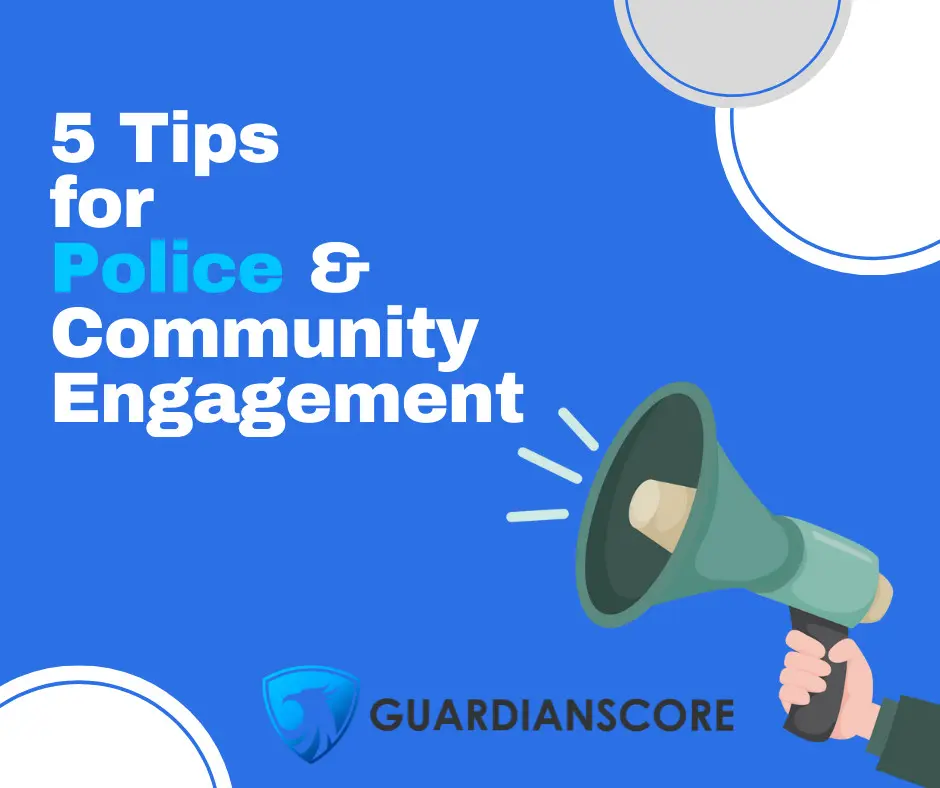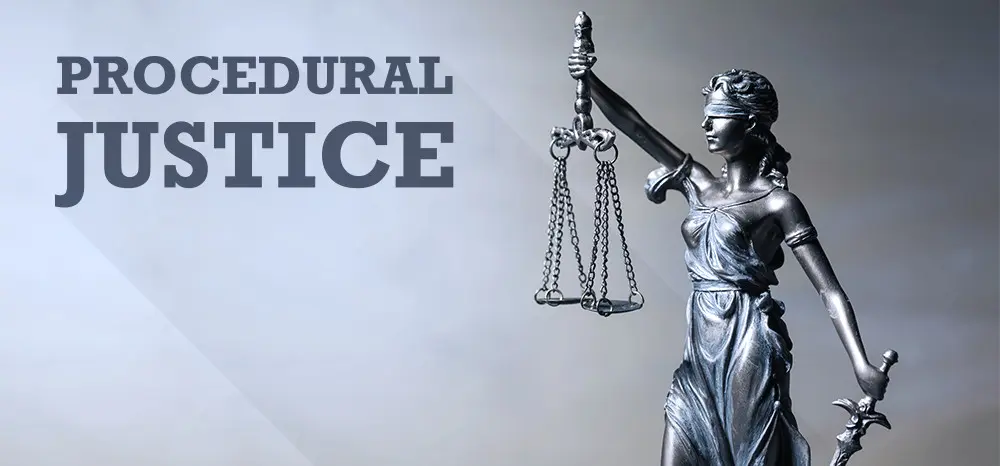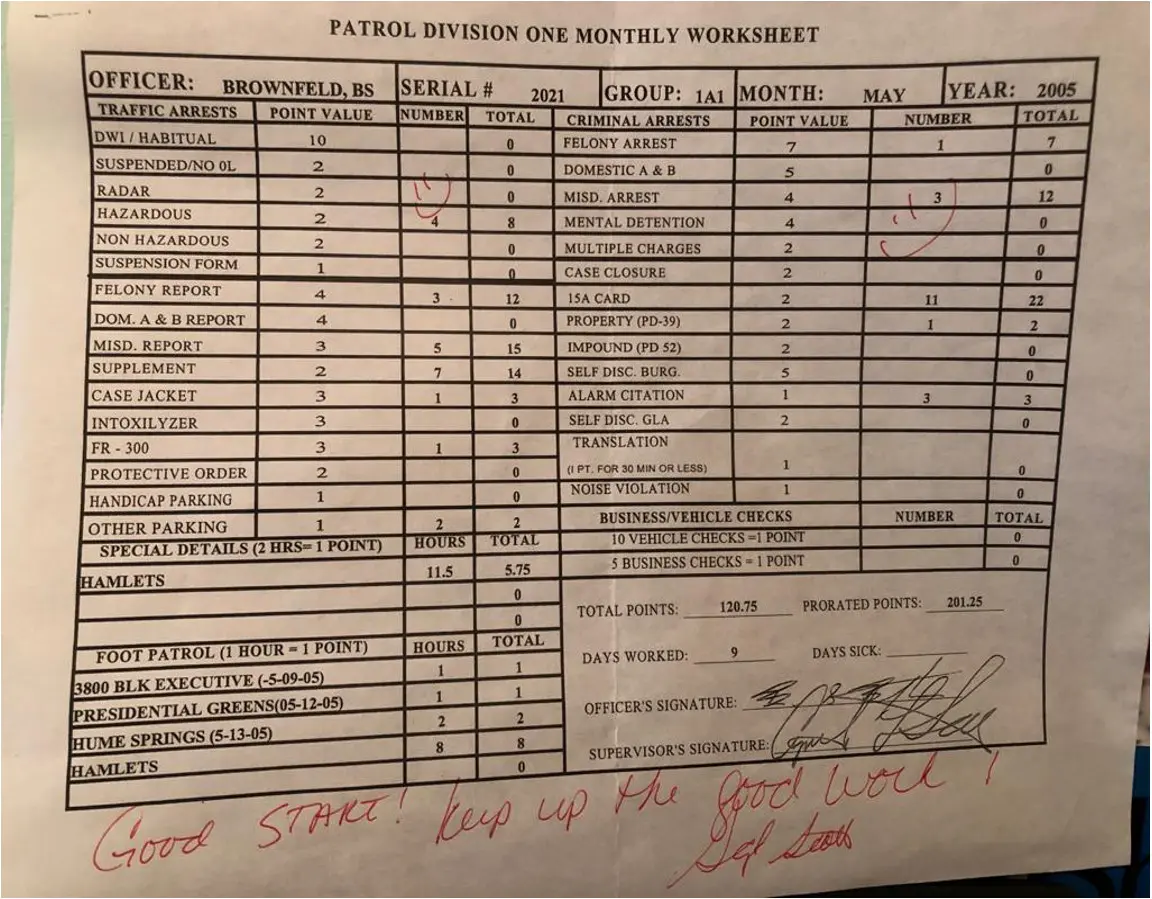Latest News

As a police leader, have you wondered about the best ways for your police department to engage with the community? What does it take to build and nurture a healthy community relationship? Luckily there are plenty of innovative leaders across the world who have come up with creative ways to connect, listen, communicate, and collaborate with the community. Here’s my top 5.
Seek Community Feedback with Surveys
I know, I am biased (ahem, Guardian Score, ahem) but there’s a reason we created the survey questions and tools that make up Guardian Score. Community members are the primary “customer” of the police. Therefore, their feedback is like pure gold for police leaders. Using Guardian Score or any other survey product available is a vital strategy and effective method for collecting community feedback. When you wonder: How are we doing? How are we treating people? Are people happy with our services? How can we improve? What we are doing great at? Are we delivering procedural justice?
When you ask community members for feedback you are able to build trust with the community by showing a genuine interest in their perspective, while also collecting meaningful and actionable data about your agency and employee performance all at the same time. At this stage in the survey world, there are a multitude of options, to include not just gathering community sentiment about police services, but also individual community feedback about individual officers and specific interactions.
Intentional Positive Engagements
We all know that some police interactions will need to involve enforcing the law. However, one way to help increase the chances of those moments going well is to spend quite a bit of effort engaging with community members in non-enforcement activities and moments of calm. This is where tons of creativity comes in. Coffee with a Cop is an example of a national event that encourages police officers and community members to meet, chat, and listen in a calm atmosphere. There are plenty of other fun examples, ranging from Pops with Cops to Cones with Cops. The point is, these events provide a casual, fun atmosphere for community members to get to know the police in a less confrontational, and more personal setting. These positive moments act as an investment in the long term relationship and trust with the community.
Listening Sessions / Community Meetings
Police departments have an opportunity to nurture the relationship with the community by actively attending and participating in a variety of community meetings. One great example, and a way to consistently reach a wide variety of community groups and geographic areas is to attend civic association meetings. This provides an opportunity to listen to community concerns from a very specific part of your jurisdiction, and helps you stay organized in terms of providing an equitable presence in all major parts of your city of county. There may also be times when it is appropriate to host or participate in listening sessions. And the key here is to truly listen. There are times when the right thing to do is to not have a well-crafted answer to every statement. Sometimes, the community just wants to know that you are interested, you care, and you are truly listening.
Dedicated Community Engagement Resources
The old adage is actions speak louder than words. Just like the old days when folks would put a community policing section on their website, but couldn’t really explain how they were actually doing community policing. Community engagement is the same thing. It can’t just be a buzzword or a hashtag. It requires an investment of time, resources, and intent. Some jurisdictions have gotten creative with creating specific specialized roles that are intended to connect with community groups. This can be more broad like a community engagement officer. Alternatively, a specific liaison officer can be established for key stakeholder community groups, such as a LGBTQ liaison officer.
Educational Opportunities for the Community
Many police departments have chosen to provide citizen police academies or youth police academies as a way to not only increase engagement with the community, but also as a way to educate the community about police practices, policies, and norms. These academies often meet once a week over a course of months, allowing for real relationships to be built between officers and community members. A bonus point here is that these citizen academies can also act as an early recruitment for folks who may be interested in a career in public safety.
There are clearly a wide variety of ways that community engagement can look and feel. However, perhaps one of the most important reminders is that the leadership of a police department must promote, measure, and reinforce the actions that surround and support a healthy community relationship. If each officer understands and believes in the idea that community engagement is a great way to spend time, it will certainly make all of the aforementioned ideas much more effective, and will come across as authentic, genuine, and a cultural theme throughout the police agency.

Procedural Justice is not something I was taught or ever heard of when I was first trained as a police recruit in 2004. In more recent years, the concept of procedural justice has been introduced into police academy and in-service trainings. The concept itself revolves around a focus on how police officers treat people. While the academic definitions can feel a bit abstract, I have always found it easiest to think of in these terms: The process matters more than the outcome. So, what does that really mean? The best way I can express this is through a personal story.
When I served as a police officer, much of my time was spent on a fugitive squad, which meant we arrested and transported a large number of folks every week. My partner and I noticed that when we would drop off people at the jail, they would often say “thank you” before we left. I always found it odd that we were being thanked for bringing them to jail. So, one time, a man said “thank you!” as we started to exit the jail. I decided to stop and asked the man, “I don’t get it, I brought you to jail, what are you thanking me for?” The man replied, “Thank you for treating me like a man.” That statement always stayed with me. This was the moment when I learned what procedural justice really meant. If the process is more important than the outcome, it really means, how you treat someone is far more important than the end result. In this case, the outcome was that he was arrested and brought to jail (not a great outcome). But what mattered to him was how he was treated during the process. How he was treated mattered enough to him to proactively thank me for it. That moment changed my entire approach to the way I understand the power of the process. How I spoke to people. The words I used. The rapport I built. Common courtesy extended. All of that actually really mattered.
Many research studies have confirmed what I experienced in this moment. The way we treat people is much more important than whether they receive a ticket or get a warning. With this in mind, it suddenly becomes clear that, officers who are excellent at delivering procedural justice are likely helping to build positive relationships with the community, one interaction at a time.
But…..how do you measure this skillset?
When we developed Guardian Score, we were laser focused on helping police leaders easily measure procedural justice skills of individual police officers. The problem is, many officers, and community members, don’t know that term or really what it means. We realized we needed to deconstruct procedural justice and break it down into 5 key, measurable behaviors/traits, to make it easier for community members to provide feedback, and for police leaders to have actual data and measurements that indicate the overall level of procedural justice for an individual person. Historically, these are skills that may have been trained, but usually not measured. We wanted to change that.
The five behaviors/traits that Guardian Score measures through the community survey tool, to provide an insight into their overall procedural justice skills, (which also directly overlap with skills related to empathy and customer service) are outlined below:
Ability to Explain WHY: When people are detained by the police, they usually want to know why they have been stopped. Most community members likely don’t intuitively know about police procedures or protocols. This desire to understand why things are happening is a natural human tendency. Explaining why a police interaction is occurring, and why certain steps are being taken can have a positive impact on the interaction.
Listening Skills: A key aspect of showing respect during an interaction is by using active listening skills. This means providing an opportunity for someone to share their thoughts, feelings, or perspective.
Fairness: Sometimes it is necessary to write a ticket or make an arrest. However, treating people fairly and consistently, based on the specific circumstances can go a long way. If an enforcement action is necessary, does it match the severity of the situation?
Professionalism: Body language, the words chosen when speaking, tone of voice, even the way the uniform is worn can all impact an officer’s perceived professionalism.
Explanation of Next Steps: Many community members don’t know what to expect after a police interaction. Taking the time to explain what comes next, services available, who may follow up, or how a person can make contact, all contribute to ending an interaction on as positive of a note as possible.
As we know from research, procedural justice does have a positive impact. Training on procedural justice is a great first step. Just like with other important trainings like defensive tactics, after people train on it, agencies need to measure proficiency. Historically, measuring procedural justice, or emotional intelligence skills, or “soft” skills, was considered too complicated, or too time consuming. Thankfully, we are demystifying and simplifying the process, and it is now possible to make procedural justice less abstract, and indeed, measurable.

In 2005, I was a patrol officer, assigned to the midnight shift in Alexandria, Virginia, driving around dark streets, night after night. I can remember a time I saw a man, by himself, pushing his broken down car, trying to get it home. I pulled over and asked the man if he needed help. He told me that he lived a few blocks away and didn’t have enough money for a tow truck. So we pushed the car together until it reached his house. He shook my hand and I went back to patrolling. This is one of the 61.5 million police/community member interactions that occur every year in the United States. The vast majority of those community interactions are not arrests of traffic tickets. They are ordinary, human, sometimes even boring interactions that usually have a happy ending. However, we call this the beautiful blindspot in policing, because we don’t see the results of these interactions. They aren’t captured in arrest reports, or calls for service data, or arrest records. And yet, I believe, the vast majority (not all) of those 61.5 million interactions are positive.
It made me think back to my police productivity worksheet. Each month I would fill out that worksheet and this is where I would earn points for things like arrests and traffic tickets. I still have my very first worksheet. When I examine it, I realize now how many interactions I was having with community members that really weren’t accounted for, or recorded. I was being evaluated on things like arrests and tickets, but the truth was, I spent much more time having ordinary interactions with business owners or tourists, who did not have an urgent police matter, but maybe just needed help finding a restaurant, or solving a problem. I spent all that time on those interactions and no one ever heard about it, because it wasn’t measured, and as a result wasn’t managed.
When we came up with the idea for Guardian Score, we were motivated to shine a light on that beautiful blindspot. We fundamentally believe that the majority of police/community interactions are positive and leave most people with a positive impression of police officers. Do some go badly? Absolutely. And we want to know about those too.
However, because policing historically has not focused on tracking, recording, or asking for feedback on the vast majority of those encounters, we have never been able to tell this story. We wanted to create a tool that would be easy to use for police officers, easy to use for community members, and help to fill in that blind spot on the wide variety of interactions that police have with community members every day. We do that by providing an easy-to-use QR code survey, that community members can fill out, right after a police interaction. That survey is directly tied to the individual police officer they interacted with, and asks questions related to procedural justice skills and abilities of the officer.
Now that we have been in use since November, 2021, we can confidently say, the Guardian Score community survey data is in fact filling in the beautiful blindspot. Our customer police departments are receiving data about interactions they never had before. They are learning about how individual police officers are performing with community members. And the results are exciting. While I can’t share our customer’s specific scores, I can say, most police officers are receiving extremely positive feedback from the Guardian Score surveys. These results further reinforce this idea that police officers as a whole are having beautiful interactions everyday with community members. Finally, with Guardian Score, there is a way for us to document and celebrate these insights, even when the results are less than perfect. Guardian Score is successfully shining a light on that beautiful blindspot, allowing police leaders to digest community feedback in new ways, and evaluate police officer performance in a much more holistic way.
Ready to get started?